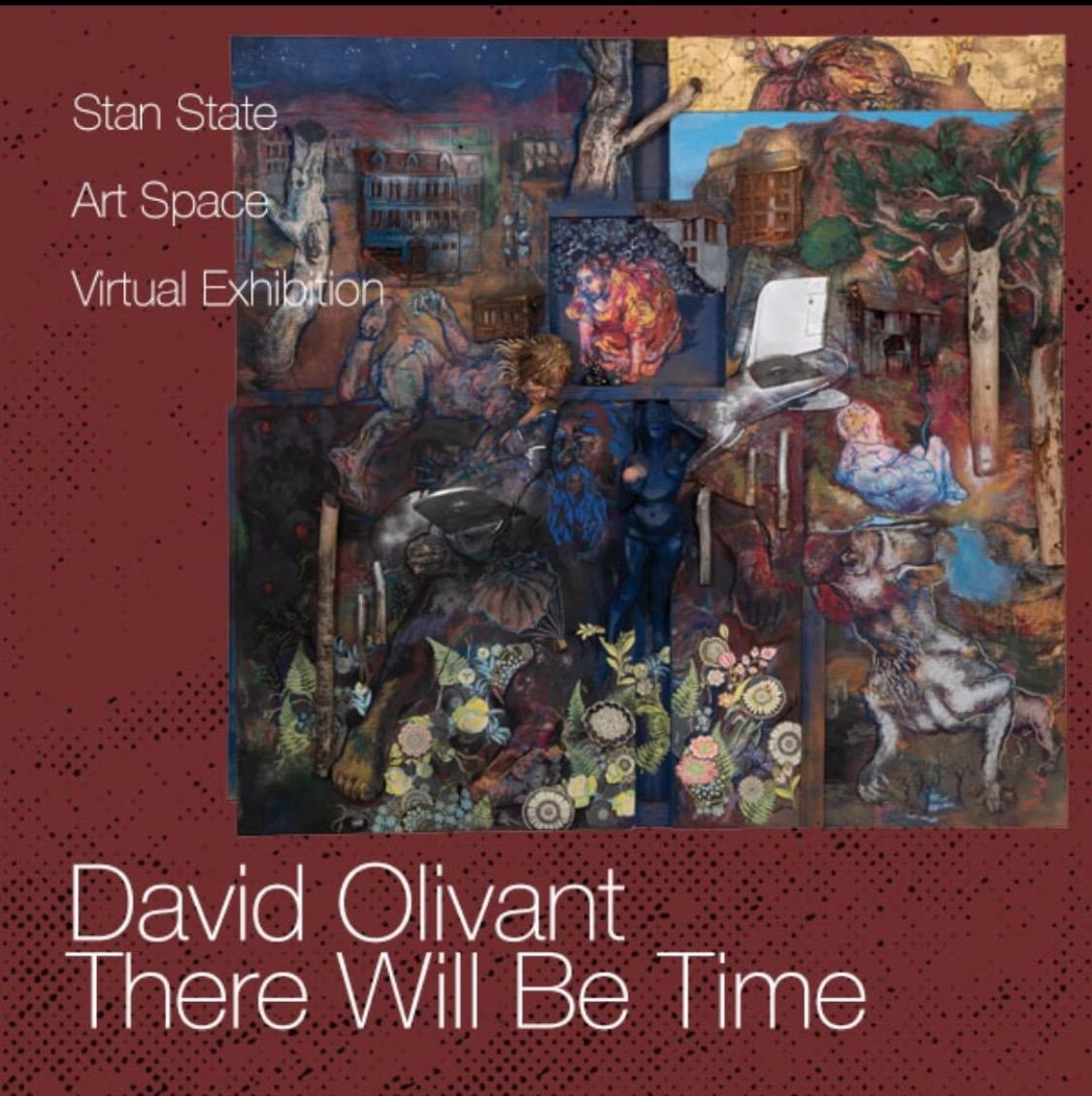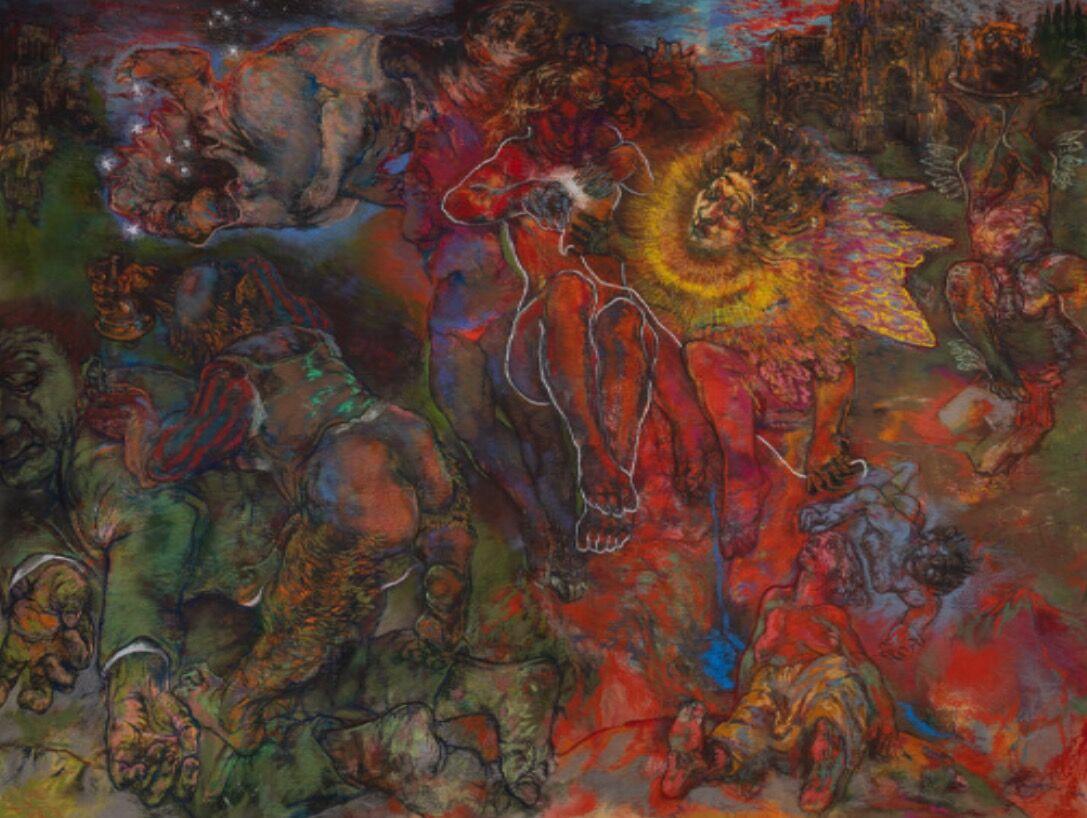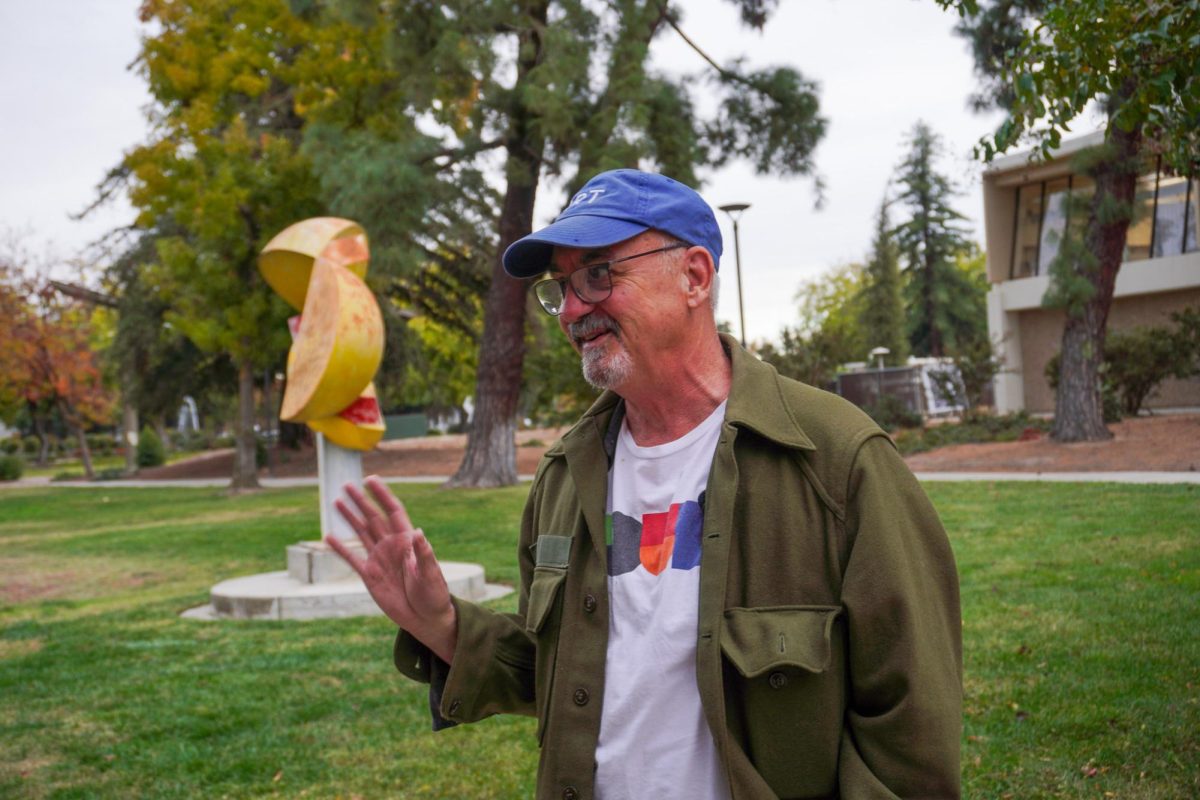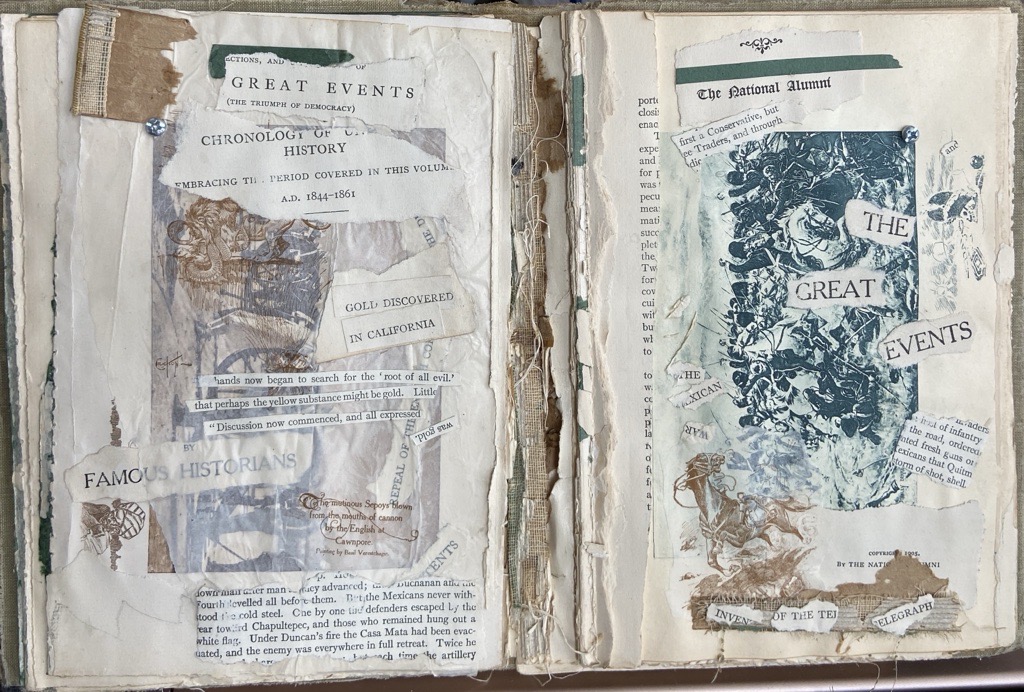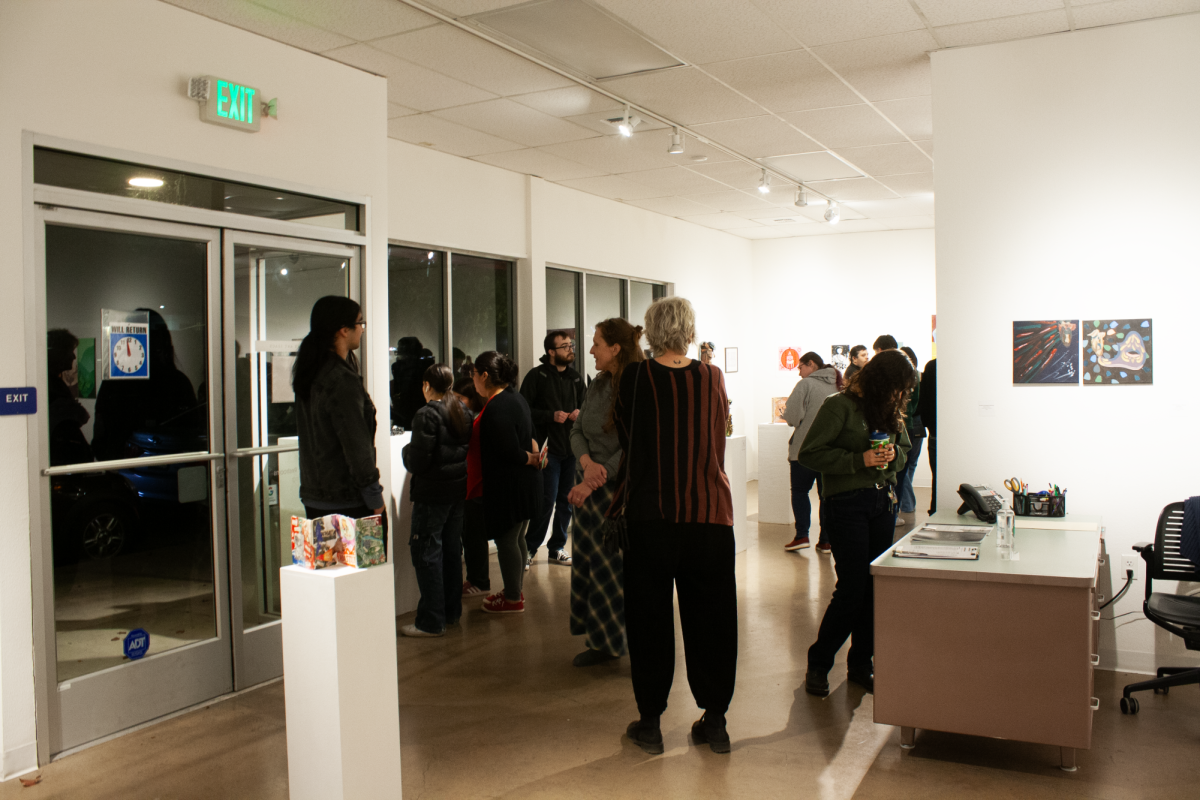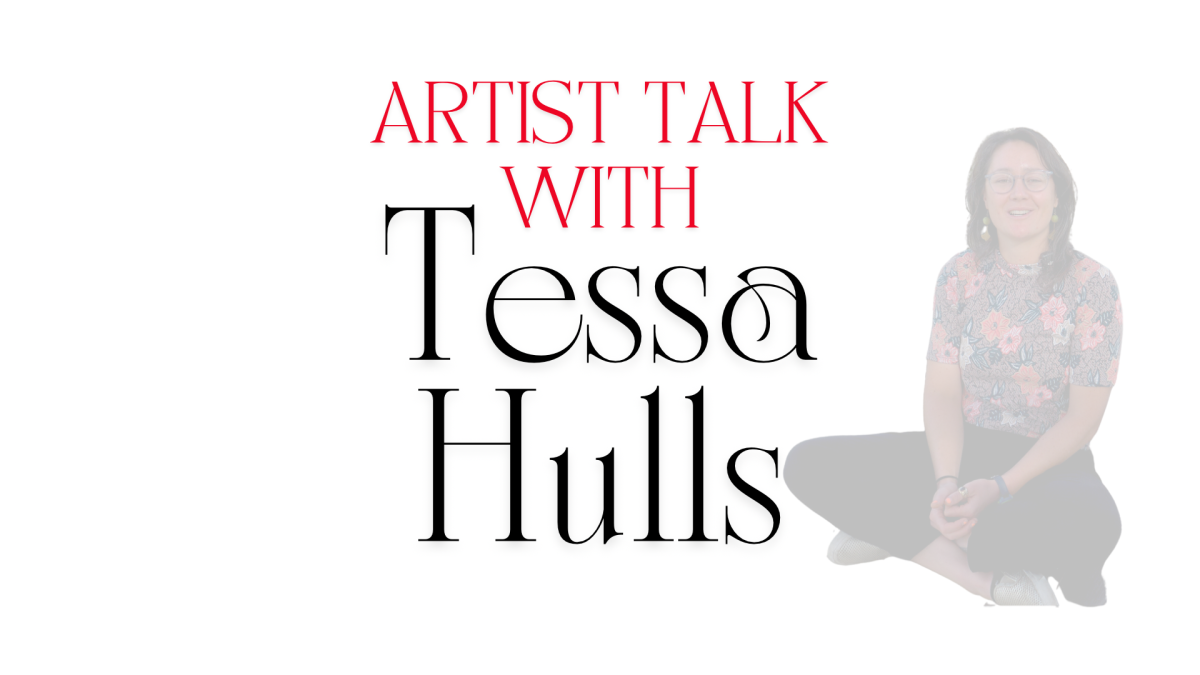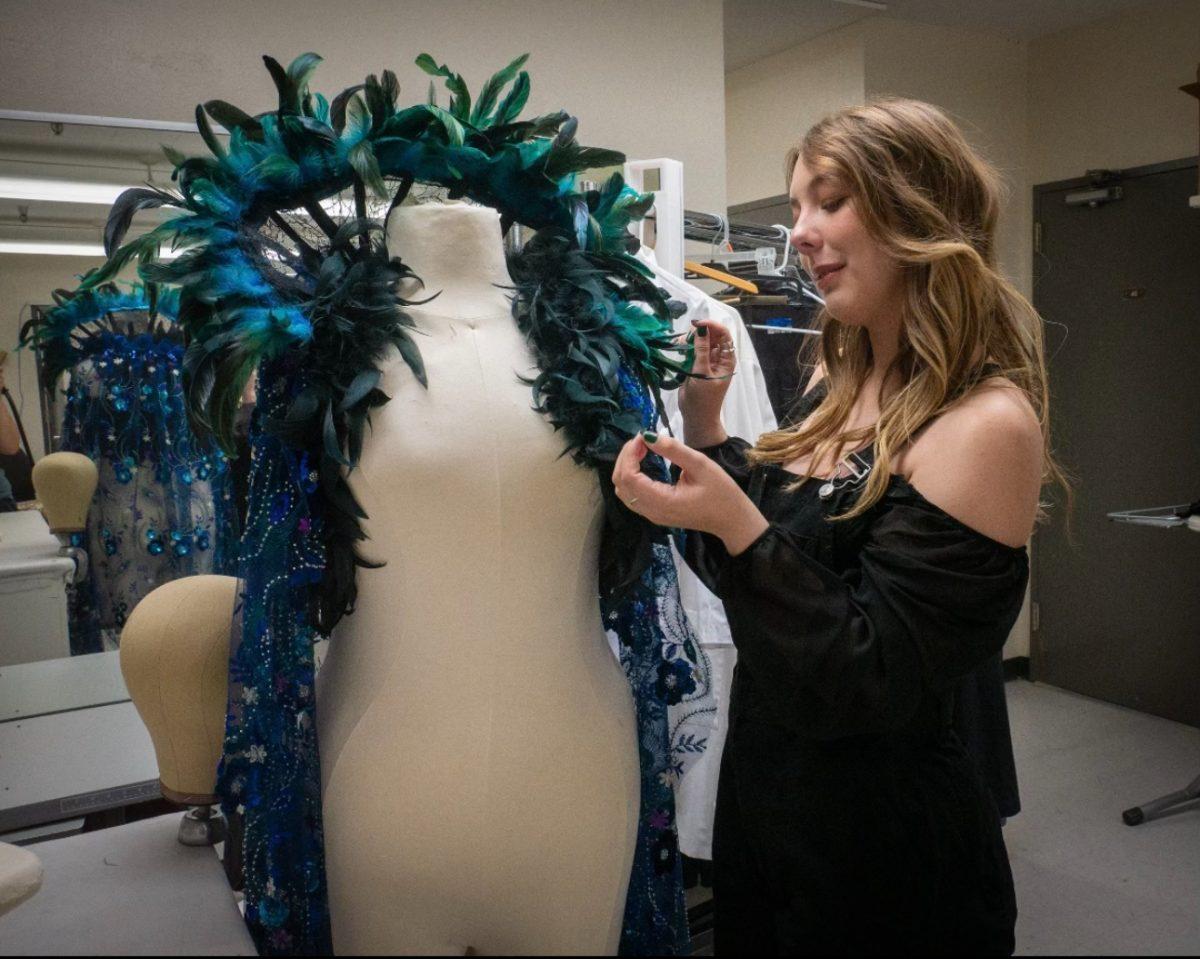On February 11, Stan State hosted an Artist Talk with artist and former professor, David Olivant. Olivant’s former students, colleagues, and admirers of his work gathered on Zoom to celebrate the opening of his current exhibition, “There Will Be Time,” which is available for viewing on Stan State’s virtual galleries until February 26.
This exhibit contains pieces Olivant has produced and altered over the past 25 years. He credits his exhibition’s title to T.S. Eliot’s poem “The Love Song of J. Alfred Prufrock.”
“Brad Peatross designed the layout of the virtual show,” Olivant explains. Peatross is the Graphic Specialist for Stan State’s School of the Arts. He works with the Music, Theatre, and Art departments on graphic design projects. He also creates the artist catalogs for both of Stan’s art spaces, the University Art Gallery and the Stan State Art Space located in downtown Turlock.
With the move to virtual galleries, Peatross states, “I work closely with guest artists to create a virtual gallery experience that showcases their work. The immersive 3D environment provides an enhanced, interactive viewing experience similar to an actual gallery.” Collaborating with Olivant, the two built a gallery that divides Olivant’s work into groups on the online gallery provider, Kunstmatrix.
Olivant describes, “It breaks down into chronological groups, from oldest to most recent [works, which include] small abstract ink drawings, large abstract pastel drawings, ceramic sculptures, large figurative pastel drawings, small figurative watercolors, Heteroglyphs.”
“Heteroglyphs” is a term coined by Olivant to describe his assemblages, or works that integrate both two-dimensional and three-dimensional components. These Heteroglyphs include fragmented pieces of ceramic sculpture and everyday items Olivant refers to as “found objects.” They are a conglomerate of humanoid figures, animals, machinery, and ordinary scraps. It is in these works in particular that Olivant’s search for contact with the uncontactable is evident.
“Although figures, animals and machine parts are often intertwined their attempts at real contact still feel only partial… What is contact and how do we know when it is made?” Olivant asks. “The difficulty of real contact adds a lot of pathos to the human condition resulting in a sense of fragmentation that seems to be only exacerbated by technological development.”
What exactly is trying to be contacted in these works? According to Olivant, all of his pieces attempt to contact the self and the concept of the other. Whether or not this contact is made, well, that’s up to the viewer.
In a pastel drawing titled, “Heartstrings,” Olivant suggests the piece is centered around the nature of dying. However, as he spoke to the other Zoomers in the Artist Talk, he reiterated that the piece’s narrative is up to the audience. Olivant is more concerned with the suggestions of meaning in his work than the meaning itself.
Olivant asserts, “I am only the authority on what I vaguely intended.” This perspective is evident in Olivant’s creative process.
He begins a piece with no set intentions or mental images in mind. “If I know what I’m going to paint ahead of time, I don’t really need to paint it anymore.” For Olivant, it is in the process of making art that he discovers intentions and makes connections. Creating art is about discovery.
For fellow creatives who feel that pull to discover, but are stuck, Olivant offers a bit of advice. “The main thing with discovering is getting out of your own way, relinquishing your will, allowing things to take their own course. You have to relinquish the illusion of control,” he said.
This process of discovery is essential for the artists themselves, but it is also necessary for us, the voyeurs.
“Quality Art Exhibitions are vital parts of a healthy community that enable us to generate vision, that fully engage our imagination and that constantly remind us of the richness and the suffering of being human in a manner for which there is no equivalent in other walks of life… which is more vital than ever at this time of crisis in global societies,” Olivant says.
While Olivant’s pieces in his exhibit, “There Will Be Time,” attempt to connect with the uncontactable, he reminds us that art serves to connect us with one another. Even during a time in which we are physically scattered, this contact is possible through virtual mediums such as Stan State’s online art gallery.
To learn more about Stan State’s virtual gallery and view the 2020-2021 year calendar for exhibitions, please visit the “Exhibitions” page on Stan State’s website. There, you can enter and view exhibitions by multiple artists and register for future Artist Talk events, held free of charge via Zoom. For more information about David Olivant and his body of work, please visit his website.
For those interested in displaying their artwork on Stan State’s virtual galleries, Dean De Cocker, Director of the University Art Gallery, claims work can be reviewed by the Gallery Committee with input from Stan’s Art Faculty. Additionally, the University Art Gallery hosts student shows. Seniors may display their work in the BFA or BA Senior Show, and other students may display work for the BFA Solo Show and Art Department Club Shows.
Categories:
Artist Talk: David Olivant Discusses Current Exhibition and the Nature of the Creative Process
Maya Radcliffe
•
February 15, 2021
0
Donate to Signal
Your donation will support the student journalists of California State University, Stanislaus. Your contribution will allow us to purchase equipment and cover our annual website hosting costs.
More to Discover

